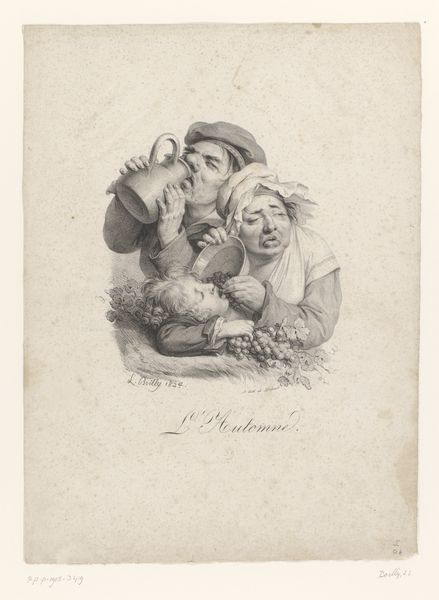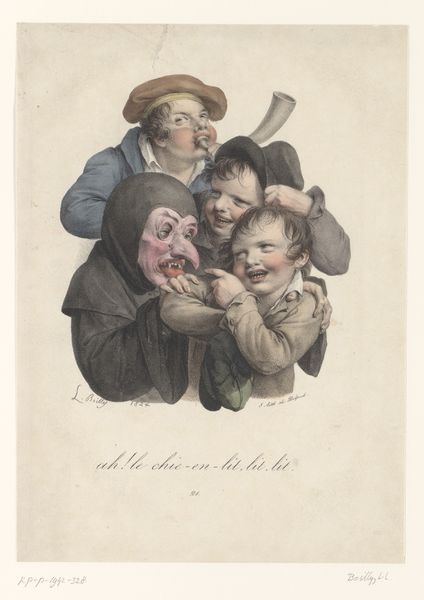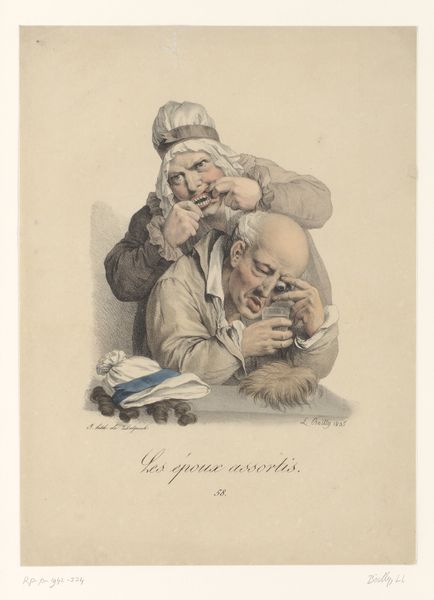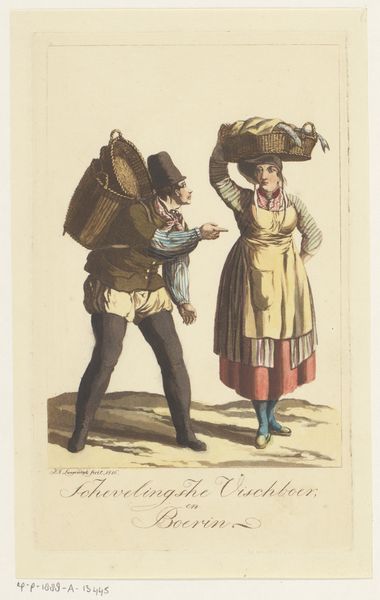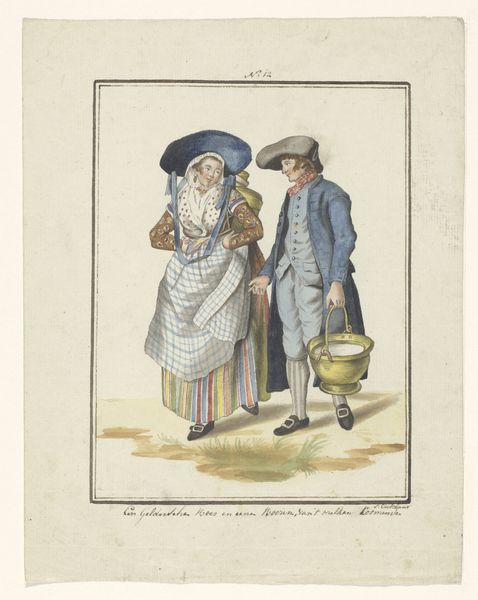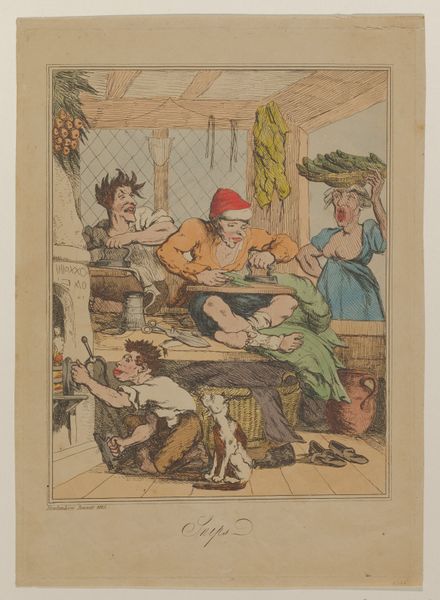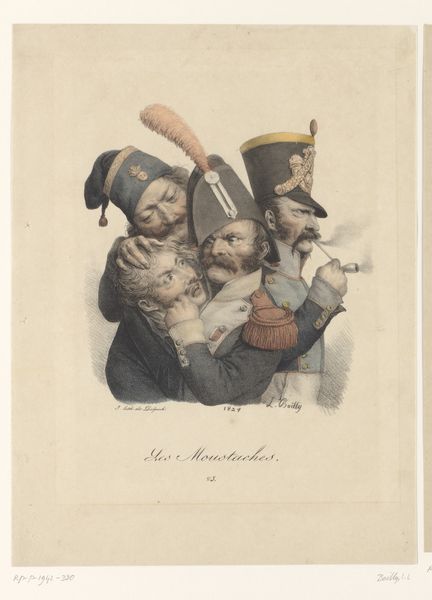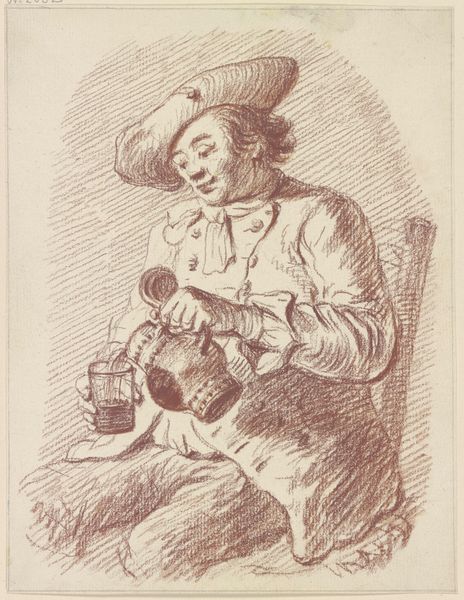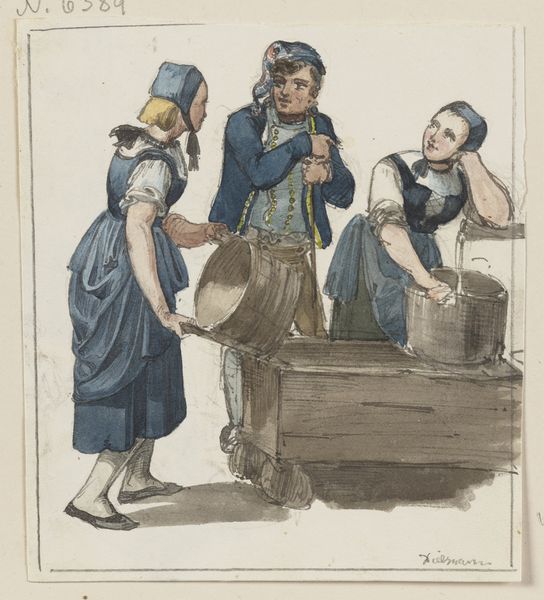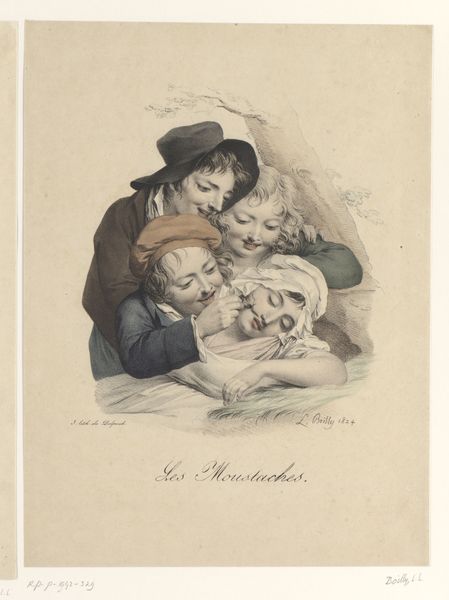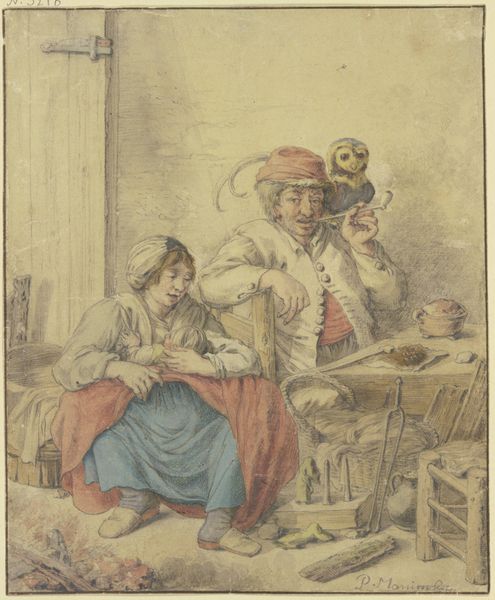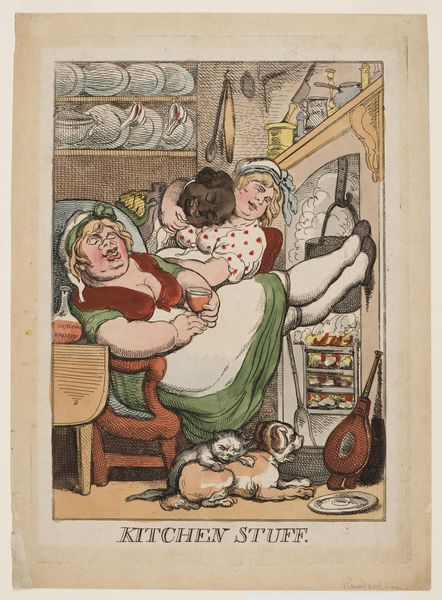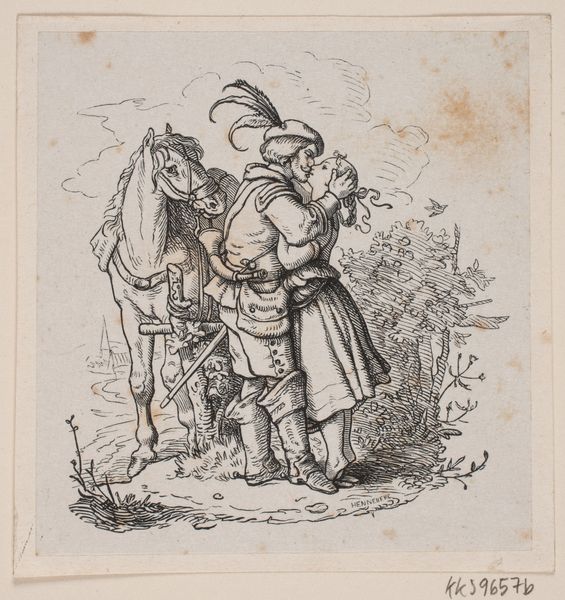
# print
#
caricature
#
caricature
#
figuration
#
folk-art
#
genre-painting
#
watercolor
Dimensions: height 108 mm, width 150 mm, height 115 mm, width 155 mm
Copyright: Rijks Museum: Open Domain
Curator: This watercolor print, from 1824, by Louis-Léopold Boilly is titled “L’Automne.” It depicts three figures intertwined in a bacchanalian scene of consumption. What are your initial thoughts? Editor: Overindulgence seems to be the operative word. It’s not a flattering portrayal; they almost seem grotesque. There’s a story being told about pleasure taken to an extreme, maybe even a warning. Curator: Indeed. Boilly was known for capturing everyday life with a comedic touch. Look at the rough paper he’s using here, almost coarse. And the textures – see how he layers the watercolor washes to build up the forms? The reddish tint used for the drunkard's nose might suggest wine-making by-products being used as a color pigment, while also highlighting social satire in access to materials. Editor: Speaking of form, those grapes. They're not just fruit; they represent abundance, fertility, and, of course, wine, Dionysus. Notice how the child is almost overwhelmed by them, force-fed perhaps? The image toys with symbolic links between intoxication and innocence lost. Curator: A fascinating insight, looking at the link between class and production adds an extra layer. Consider how the wine industry, particularly in 19th-century France, relied on extensive labor. Boilly, in choosing this subject, is also hinting at the socio-economic realities of harvest time –the materiality of agriculture as a factor. Editor: Right, and the specific arrangement of the figures! The drunkard looms large, visually dominating the composition. This power dynamic, coupled with the child’s forced indulgence, subtly questions societal norms. The woman, although present, plays a secondary role – the nurturer enabling excess, herself trapped between labor and duty. Curator: These choices highlight how caricatures served as popular critique of social behaviours within genre painting. These would have been widely distributed. It suggests mass consumption also relied on materials used at cheaper availability such as printed media, therefore expanding our ideas of artwork. Editor: Absolutely, Boilly's work is so visually rich with details which creates these different cultural stories, which is hard to turn away from as it is so emotionally evocative. Curator: Precisely. Considering materials helps to reveal layers within the images that open interpretations beyond immediate humor. Editor: A somber celebration, indeed. One of revelry that leads down difficult roads when exploring symbolisms that make cultural icons.
Comments
No comments
Be the first to comment and join the conversation on the ultimate creative platform.
